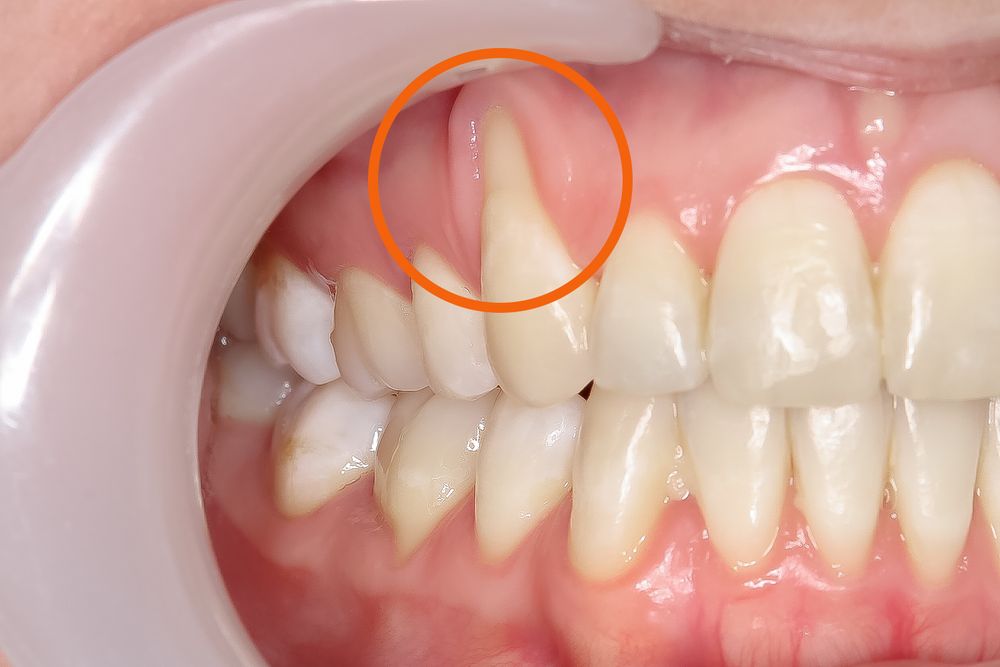Treating Difficult Areas Of Periodontal Disease
- Home
- Treating Difficult Areas Of Periodontal Disease

The goal of any periodontal treatment (“peri” – around; “odont” – tooth) is to keep the supporting structures of the teeth – gum, bone and the periodontal ligaments that join these tissues to the tooth roots – healthy. Bone loss around a tooth will jeopardize its very survival. Local antimicrobial or antibiotic therapy is a non-surgical treatment approach generally aimed at preventing further periodontal breakdown in difficult-to-treat areas or areas that have not responded well to more traditional treatment approaches.
First some background: Periodontal disease is an inflammatory response to bacterial biofilm (plaque) collecting at the gum line in the absence of effective daily oral hygiene. Left for long periods of time, the biofilm will cause inflammation that can separate the gums from the teeth. Untreated, this bacterial infection can spread from gingivitis (“gingival” – gum; “itis” – inflammation) to periodontitis, with loss of bone support. Although toothbrush bristles and floss reach a little way inside the gum line, it is essentially the job of your periodontist (or general dentist or hygienist) to control bacterial biofilm inside “pockets” below the gum — areas of tissue detachment caused by periodontal disease.
After diagnosis, oral hygiene education and training, the starting point for all periodontal therapy is to mechanically remove the biofilm along with the toxins produced by bacteria that become ingrained in the root surfaces, and calcified deposits known as tartar or calculus. This mechanical instrumentation is a non-surgical, deep-cleaning technique known as root planing or debridement. Once the inflammation is controlled and stabilized, surgical treatment may be needed to eliminate the pockets created by tissue detachment, to regenerate lost tissues and create new attachment. But it’s more that that; even after successful treatment to control inflammation, areas that are difficult to treat might still remain, particularly in advanced cases. These areas might include deep pockets resulting from severe bone loss; or “furcation invasions” — areas where the roots of a tooth branch and leave cave-like areas of bone loss, which are very difficult to reach, decontaminate and keep disease-free.
If, however, your doctor sees signs of disease — gum inflammation, bleeding or pus formation, for example — persisting or recurring after therapy in such areas, then locally applied antimicrobial products or antibiotics might be recommended.
The most effective antimicrobial for reducing biofilm and thus gingivitis is chlorhexidine mouthrinse in a 0.12% solution, available only by prescription. Prolonged use can cause significant tooth staining in some people. It can also affect taste and may irritate the mouth. Since it does not penetrate below the gum line in areas resistant to regular treatment, it needs to be applied by your periodontist or hygienist, who will irrigate and flush out the area/s of concern.
Locally (topically) applied antibiotics may alternatively be recommended to arrest or even reverse periodontal disease progression. During periodontal (maintenance) treatment these difficult-to-reach areas may be cleaned out as best as possible and then local antibiotics, usually tetracycline, are introduced into the areas to stop inflammation and infection, and encourage healing. Sometimes topically applied antibiotics can more effectively penetrate these difficult-to-reach areas than cleaning instruments.
There are other medications that can be applied professionally to diseased periodontal tissues (gum and bone) that will continue to work for an extended period of time. Locally delivered sustained-release products include chlorhexidine chips, doxycycline gel and minocycline miscrospheres (tiny, medicine-releasing beads). The latter are both forms of tetracycline. They all suppress or kill bacteria, and when used in conjunction with mechanical cleaning can significantly reduce inflammation and improve the attachment of the gums to the teeth.
It is important to realize that although periodontal disease is a bacterially induced and sustained disease, mechanical cleaning to reduce bacteria is the best and most often used treatment. There are good and bad bacteria in your mouth, and you need the good ones to keep you healthy. Generally speaking it’s not possible or recommended to use antibiotics long-term as they will suppress the good types of bacteria along with the bad. Suffice it to say there are pros and cons to the use of antibiotics, both local and systemic (generally taken by mouth over a set period of time).
As to whether antimicrobial or antibiotic treatment would be best in your specific case, it is advisable to discuss all the risks, benefits and alternatives with the periodontist or dentist who is recommending it to you and who will be carrying out your treatment.